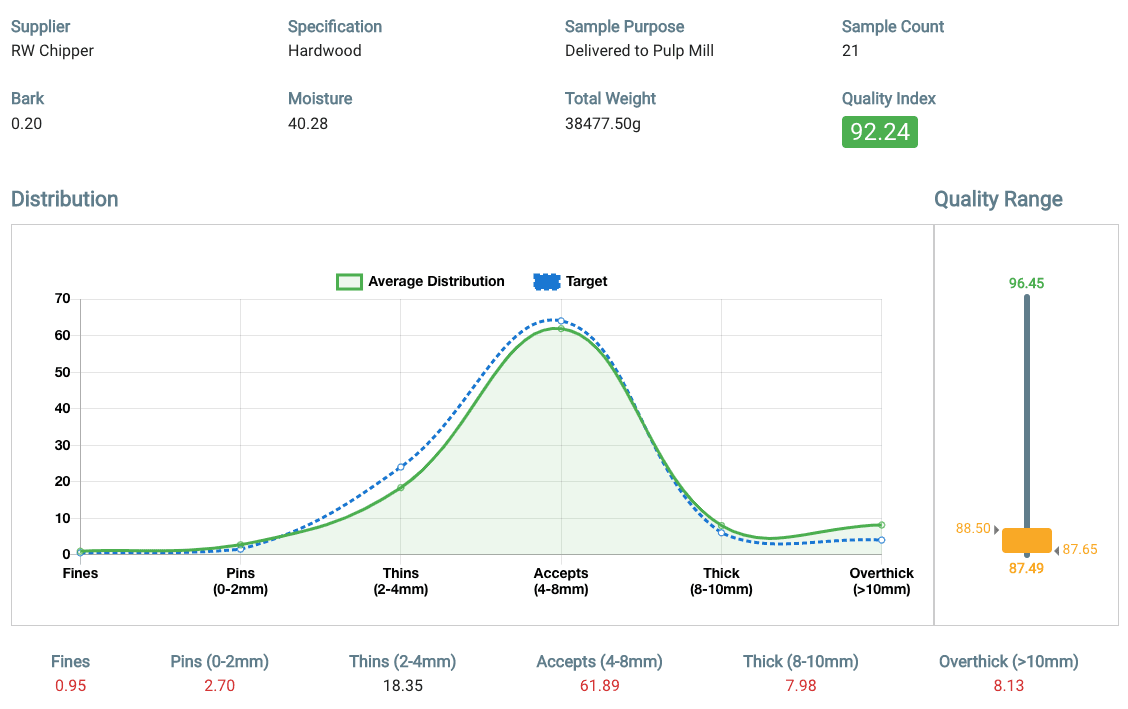Chip Quality and Pulp Yield
Wood chips are a common feedstock for producing digester pulp, which is a type of pulp made through a chemical process rather than mechanical means. The quality of the wood chips can significantly impact the yield of digester pulp.
There are numerous factors that can affect wood chip quality and ultimately impact the yield of digester pulp. Some of these include the species of wood, the moisture and bark content of the wood chips, and the size and consistency of the chips.

Wood Species
In general, wood chips that are made from softwoods, such as pine or spruce, tend to have a higher yield of digester pulp compared to hardwoods, such as oak or maple. This is because softwoods have a higher ratio of cellulose, the main component of pulp, to lignin, which is a chemical that gives wood its strength but is more difficult to break down during the pulping process.
Moisture Content
Moisture content is another important factor that can impact the yield of digester pulp. Wood chips with a higher moisture content will have a lower yield of digester pulp because the excess moisture will need to be evaporated during the pulping process, which takes energy and reduces efficiency.
Bark Content
Bark content can also impact the yield of digester pulp. Bark is the outer layer of a tree that protects the tree from injury and helps to regulate water and nutrient uptake. It is composed of cellulose, lignin, and other compounds, but it has a lower cellulose content and a higher lignin content compared to the wood of the tree.
In general, wood chips with a higher bark content will have a lower yield of digester pulp compared to wood chips with a lower bark content. This is because the bark is more difficult to break down and produce a consistent pulp, and it also contains a higher percentage of lignin, which is more difficult to break down during the pulping process.
To maximize the yield of digester pulp, it is generally recommended to use wood chips with a low bark content. This can be achieved by carefully debarking the logs before chipping them, or by using wood chips that have been made from debarked logs.
However, it is important to note that bark can also have some beneficial effects on the pulping process. For example, bark can help to reduce foaming in the digester and improve the yield of some types of pulp. In some cases, it may be beneficial to include a small amount of bark in the wood chips in order to take advantage of these benefits.
Size Distribution
Finally, the size and consistency of the wood chips can also impact yield. Smaller, more uniform chips tend to produce a higher yield of digester pulp compared to larger, more irregular chips. This is because smaller chips are easier to break down and produce a more consistent pulp.
Overall, the quality of the wood chips plays a significant role in the yield of digester pulp. Using wood chips that are made from softwoods, have a low moisture content, and are small and uniform can help to maximize the yield of digester pulp.
Do you have feedback or a question related this article? If so, please submit your feedback or question here!
Company
Platform
Resources
Contact